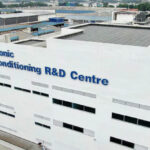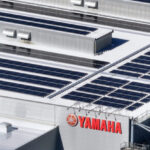ASIA ELECTRONICS INDUSTRYYOUR WINDOW TO SMART MANUFACTURING
Panasonic Doubles Output of New Pure Hydrogen Fuel Cell
Panasonic Electric Works Co., Ltd. is set to launch a new pure hydrogen fuel cell PH3 (three-phase three-wire type) H2 KIBOU (*1) in Dec. 2024. Specifically, the fuel cell generates electricity through a chemical reaction between high-purity hydrogen and oxygen in the air.

In Oct. 2021, Panasonic launched the PH1 (single-phase three-wire type), a 5kW pure hydrogen fuel cell. In June 2023, it launched the PH1+ (three-phase three-wire type), which is based on the PH1 and supports the much-requested three-phase three-wire output. The company has received requests from customers for pure hydrogen fuel cells to increase power generation capacity and ease installation constraints.
Thus, in response to customer demands, the maximum power output of the latest fuel cell has been doubled. It now features 9.9kW based on the 5kW of the present model. The power generation output can be adjusted in 1kW increments(*2), making it possible to create a free power generation plan.
By reviewing the equipment configuration, Panasonic has significantly reduced the maintenance space and eased other installation constraints. This paves the way for its availability to a wider range of customers. In addition, it is possible to reduce the initial cost (kW unit price) by reviewing the entire system configuration. Also, it enables reduction of life cycle costs (kWh unit price) by extending the period until the suspension of total inspections to 15 years.
Panasonic will continue to respond to customer requests in detail and promote a carbon-neutral society. Furthermore, it can contribute to the realization of a decarbonized society based on the Panasonic GREEN IMPACT initiative. It can propose a new option for the full-scale use of hydrogen to expand the introduction of renewable energy.
Main Product Features
1. Approximately doubles the maximum power generation output
To meet customer requirements, Panasonic has doubled the maximum power generation output to 9.9kW based on the current 5kW. It is also possible to further increase the power generation output by connecting multiple units.
In addition, the heat generated during power generation can be used as hot water in factories and buildings by consolidating it in hot water storage facilities.
2. Increased flexibility in power generation planning with output adjustment function
Using the PH3 app, the power output can be adjusted in 1kW increments.
It enables the connection of multiple pure hydrogen fuel cells. Thus, it is possible to flexibly plan power generation at factories where various demand fluctuations are expected.
3. Increased degree of freedom of installation, making it available to a wide range of customers
By reviewing only the front of the equipment from the four maintenance surfaces (front, back, left and right sides) of the current model, it has been possible to reduce the installation space by 53% (*3) compared to the current model.
In addition, by lowering the installation environment temperature to the lower limit of -15°C and making it high-altitude (1,000m above sea level) and salt damage resistant (*4), it will be possible to provide it to a wider range of customers.
4. Contributes to the reduction of initial costs and running costs
By doubling the maximum power generation output and reviewing the overall configuration of the equipment, the initial cost (kW unit price) is reduced. In addition, by extending the design life from 90,000 hours to 100,000 hours and extending the period from 10 to 15 years for the current model, it will contribute to reducing the life cycle cost (kWh unit price).
Panasonic GREEN IMPACT
The Panasonic Group has established a long-term environmental vision, “Panasonic GREEN IMPACT.” It aims to achieve both “better lifestyles” and “a sustainable global environment.”
By 2030, it will reduce CO2 emissions associated with its business to virtually zero. By 2050, it will create an impact that contributes to the reduction of more than 300 million tons (*5), which is about 1% of the current total global emissions of approximately 31.7 billion tons (*6).
Panasonic is engaged in business activities aimed at realizing a circular economy in which resource efficiency contributes to decarbonization and reduces the consumption of limited natural resources.
Notes:
*1 H2 KIBOU and the H2 KIBOU logo are registered trademarks of Panasonic Corporation.
*2 It can be set with an output of 4kW or more.
*3 In the case of 40kW output
*4 It is necessary to keep the distance from the open sea at least 500m so that the sea breeze does not hit it directly.
*5 Energy-derived CO2 emissions in 2020: 31.7 billion tons (Source: IEA)
*6 CO2 emission factors are based on the 2020 Panasonic standard
This is an online translation of a Japanese press release with slight editing made by Dempa.
-05 July 2024-




